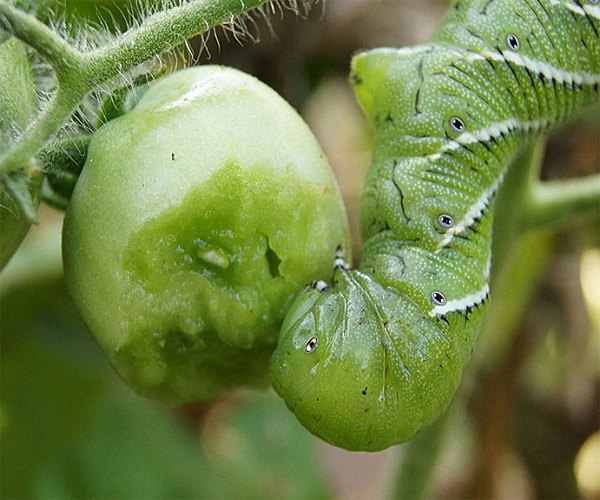The nightshade family of plants is particularly vulnerable to hornworms, which cause severe harm in a short time. Newly born worms will thrive on the fragile leaves of tomatoes, peppers, potatoes, and eggplants.
Tobacco and tomato hornworms are the two main species of Hornworm. Despite their resemblance in appearance, you can tell them apart by the little horn on their heads. The horn of a tobacco hornworm is red, but the horn of a tomato hornworm is green or black.
Hornworm Damage — How to Prevent It
Hornworms can only be eradicated by locating and eradicating them. In reality, the only thing left to do is track them out and eliminate them before they can do any damage to your plants.
However, this can be a challenge. As you can see in the video we’ve included in this article, it can be incredibly challenging! Camouflage is the specialty of hornworms. Regardless of how young or old they are, they have a remarkable ability to blend in with the rest of the plant.
The good news is that you can catch them in the act if you know a few minor tricks. In the daytime, one of the secrets works exceptionally well, while the other can assist you locate and identify them in the night. Your plants will be protected from pests if you use both!
How To Find Tomato Hornworms?
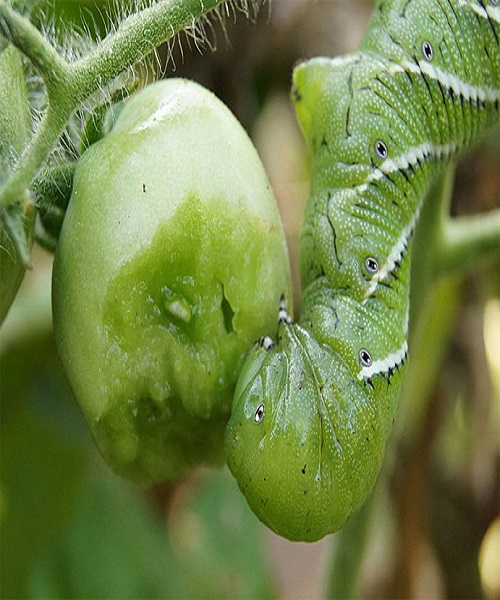
Using a Flashlight with a Black Light
If you have a tomato hornworm infestation and are unable to discover the pests, you can use a low-cost black light flashlight to search your garden at night for the perpetrators.
Translucent hornworms can be seen under a black light. The worms glow brightly against the foliage thanks to the UV light. Simply stroll your rows and shine a light on the foliage to see how it changes color. It’s awe-inspiring to watch them light up!
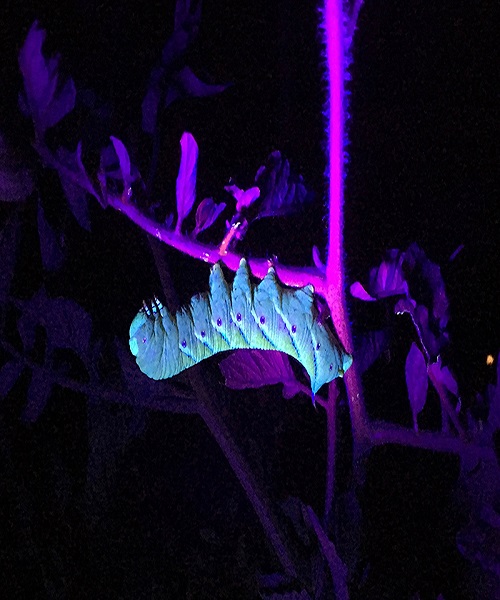
A long-term strategy
If you don’t keep an eye on things, you’ll end up with hornworm infestations. To begin, make a habit of checking on your tomato plants on a daily basis. Indeed, during the hottest months of the year, we double-check our plants, one in the morning and one at night.
What exactly are we trying to find, then? In the first place, we’re keeping an eye out for any indicators of the harm they’ve done. That’s usually a gnawed-to-the-nubs stem or branch. Because of the damage this can cause to plants, it’s imperative that you find and destroy it as soon as possible if you spot this on your property.
You only need to train your eyes to look for the manure or droppings that hornworms leave behind if you want to catch them early.
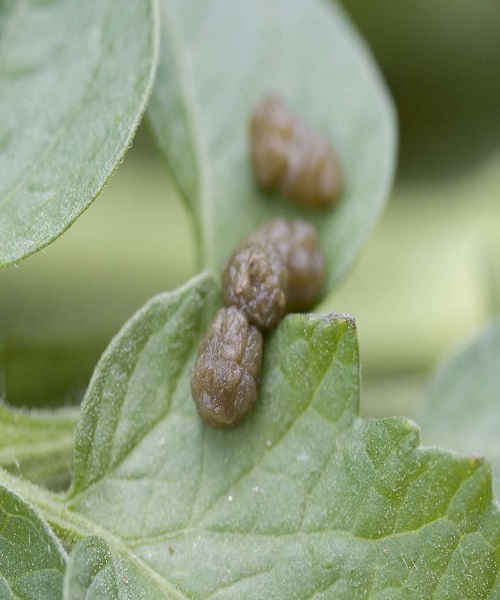
Finding Hornworm Droppings
The excrement of hornworms can be found far more easily than hornworms on your plants.
Even while hornworms are masters of camouflage, their dung is anything but! Feeding on leaves, they excrete a unique form of dung. They also leave a lot of food behind since they consume it so quickly.

Finding Small Hornworms
Tiny black spots of manure will be left behind by a baby hornworm. They resemble black coffee grinds so closely that they’re nearly indistinguishable. After training your eyes to seek for the black specks, you’ll be able to swiftly identify it once you do. The immature hornworm will be found wherever there is manure.
Small manure droppings are what you’re searching for as you walk your plants, so keep an eye out for those. If you put in the time and effort, you’ll become an expert at finding worms within four to six inches of freshly excreted feces.
To find them early, this is the only method that is truly effective. It would be nearly impossible to find them if you were to search for them without a precise location in mind. You need to find the hornworms while they are still young to protect your plants.
For the first two to three days after hatching, young hornworms will feed on leaves or short stems, causing the least damage. But if you allow them to grow in size, the damage swiftly increases!
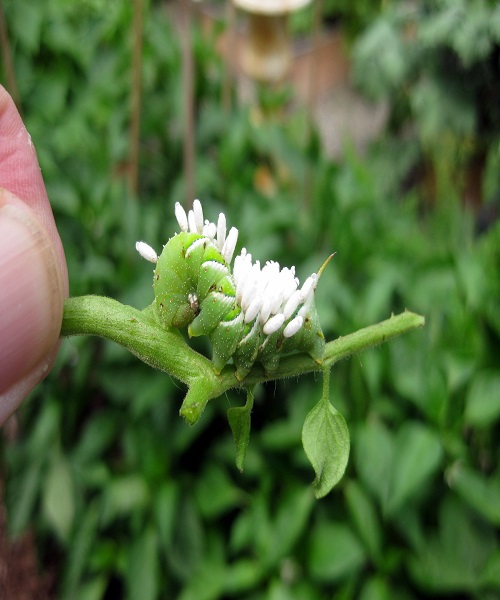
Finding Larger Hornworms
The droppings will be even larger if the hornworm has expanded in size. The diameter of an adult hornworm manure sphere or pellet will range from 1/8 of an inch to 1/4 of an inch. In addition to the manure itself, you’ll often discover gnawed-upon stems and leaves nearby.
Having green manure means it’s still quite new. There is a good chance the larger hornworm will be peering at you from a branch. Look for the hornworm within one foot of where you think you saw it if the manure is darker in color and drier.
Keep an eye out for pests around the tops of branches and stems when searching for them. This is where hornworms prefer to find their way about rather than scurrying through the greenery.
Always remove the manure from the leaves once you have found the hornworm and the droppings. In this way, on your next visit, you will be able to identify any hornworm droppings you come across as an indication of new infestations. – & not waste your time seeking for one you’ve already found.


